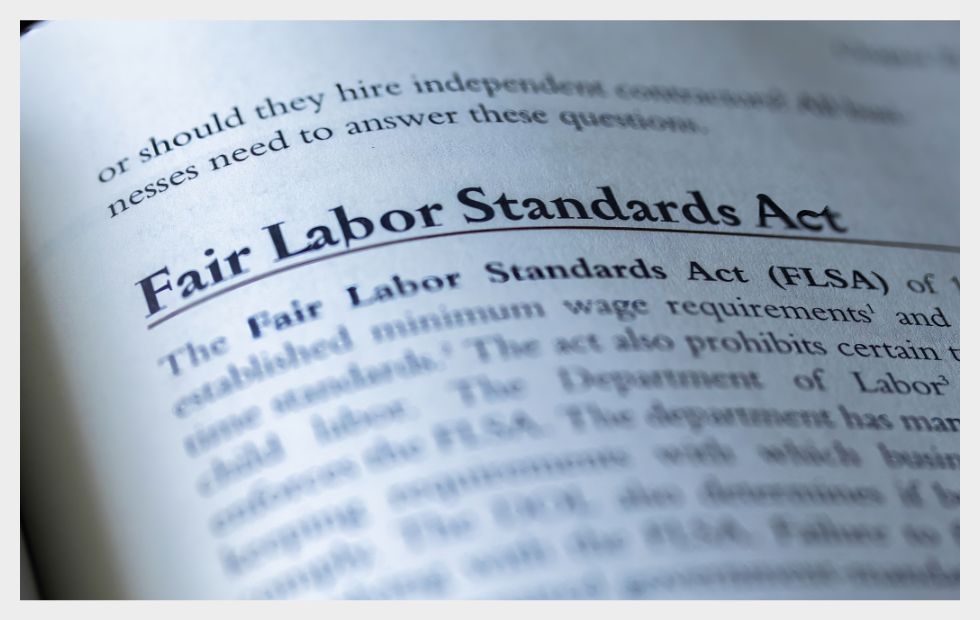What are the work culture and financial norms in the U.S.?

Newcomers to the U.S. workforce adapting to workplace norms and financial expectations.
When you’re looking for your first job as a newcomer to the U.S., the country’s work culture and financial norms can be surprising. Specifically, things like normal working hours, taxes, and tipping culture might seem foreign to you.
For example, in the United States, you might be offered an hourly wage even though you’re working a full time job. If you’re from Brazil or Argentina, the concept of hourly compensation for full time positions may seem unusual, as such roles are typically salaried in your home country.
Similarly, you might be surprised after receiving your first salaried position in the U.S. because your paycheck is only your “net pay” rather than the “gross pay” you imagined. This might be because you were told that you’d receive a salary of $70,000 a year, but in reality your take-home pay is closer to $55,000 a year.
These practices might seem strange to new immigrants in the U.S. Yet, for American employers these practices are so normal that they don’t even explain them to newcomers. To clear the air, we’re going to explain some of the common things that take place in workplaces in the United States
In this guide, we will answer the following questions:
- How are people paid in the United States?
- How can I negotiate a salary?
- How can I ask for a raise in my salary?
- How much of an hourly raise should I ask for?
- What is a common “workweek” in the U.S.?
- What does “full time” employment mean?
- What does “part time” employment mean?
- What is overtime?
- How does tipping work in the U.S.?
- What are other common phrases in American work culture?
- How are financial norms different in the U.S. than other countries?
How are people paid in the United States?
When receiving a job offer in the U.S., the salary is typically stated as either an annual salary or an hourly rate. This gives employees a clear idea of their potential earnings before taxes and deductions.

Navigating salaries and wages in the U.S.—hourly pay, salaries, and deductions explained.
Unlike in some other countries where taxes are automatically deducted by the employer and employees may not be aware of their gross salary, in the U.S., employees are often provided with both gross and net salary information.
Hourly pay structure
When it comes to hourly wages, employees are compensated for each hour they work. You’ll find this approach frequently in sectors like retail, food service, and other part-time jobs.
As you’re searching for work, you are likely to hear this described as “earning twenty dollars an hour.” You will probably see hourly wages written on applications or company websites as “ an hourly rate of $20,” or “$20/hour” or, “compensation: $20 an hour.”
For example, a barista at a coffee shop will likely earn an hourly wage and their earnings will consist of the total hours they’ve worked within a certain number of days. This period of time is called a “pay period” and usually spans one or two weeks.
So, if the barista earns $10 an hour and works 30 hours in a week, they would make $300 ($10 x 30 hours). Similarly, working 40 hours would bring their weekly earnings to $400 ($10 x 40 hours).
Salary pay structure
When a job pays someone a salary, they earn a fixed amount of money regardless of the exact number of hours they work. This payment structure is often found in corporate roles, government jobs, medical roles, and more.
Salaries are almost always expressed annually. This means when a person accepts a salaried position, they are told how much money they will receive over the course of the entire year. Salaries offer the benefit of consistent and predictable income, but may also cause employees to work extra hours without extra pay to fulfill their job responsibilities.
As you explore job opportunities, job listings or company websites might describe salaries as “an annual salary of $80,000” or simply “$80,000/year.”
This salary of $80,000 will then be split into regular payments throughout the year. If you’re paid once a month, this breaks down to about $6,666.67 per month.
If this salary is paid every two weeks, it would be approximately $3,076.92 per paycheck, assuming 26 pay periods in a year.
How can I negotiate a salary?
Negotiating a salary basically means an employee and employer agreeing on how much money the employee will be paid for a year. This step takes place after you’ve accepted a job offer, but before you begin working.
For example, an employer might extend their first salary offer of $65,000 per year. This amount of money is typically based on the company’s budget, and how your experience and skills align with their needs. While this initial offer might seem non-negotiable, there’s often room to ask for more money or better benefits.

Negotiating your salary—how to confidently discuss pay and benefits with potential employers.
If the offered salary doesn’t meet your expectations or needs, you might decide to make a counteroffer. For example, you could request to be paid $75,000 a year. You could cite your extensive experience, unique skills, or the average salary for similar positions in the industry and geographic area as justification.
Employers usually respond to counteroffers in one of three ways: acceptance, rejection, or a counter to your counteroffer. For instance, they might counter your request for $75,000 with an offer of $70,000.
However, recognizing the importance of total compensation beyond just the salary, employers may also propose other benefits to create a more attractive package. This could include options for remote work, increased health benefits, or additional vacation time.
How can I ask for a raise in my salary?
After being hired for a job in the United States, employees often undergo a probationary or introductory period. During this time, their performance and relationship within the organization are evaluated to ensure the employee is a good match. This period typically lasts a few months and may involve formal or informal performance reviews.
After this initial period, it’s generally considered appropriate to ask about a raise, especially if your performance has been satisfactory. Many employees wait until around the six-month mark to bring up the topic.
Beyond this initial period, it’s customary for employees to consider asking for a raise once a year. This conversation often happens during an annual review in which the employee and employer discuss performance, accomplishments, and a potential raise.

Climbing the salary ladder: When and how to request a pay increase.
It’s also good to remember that your employer may already plan to offer period raises to employees. In the United States, it’s already customary for organizations and businesses to periodically increase their employees’ salary to compensate for inflation and the cost of living.
Keeping that in mind, you may just be asking for a larger raise than the percentage your employer already planned to offer you. Plus, when your employer announces their customary raise, it could be a perfect time to ask for a bit more money since the conversation will already be open.
How much of a salary raise should I ask for?
On average, pay raises are usually about 3% to 5% of your current salary.
For someone earning $70,000 annually, a 3% raise translates to approximately $2,100.
Meanwhile, a really good pay increase might fall between 4.5% to 5% of your salary which would mean an increase of $3,150 to $3,500 for someone earning $70,000. Anything exceeding this range is considered exceptional.
When considering asking for a raise, it’s important to reflect on why you’re requesting it and how long it’s been since your last one. For example, if your job has significantly changed, such as requiring longer hours or more travel, it might be reasonable to request a raise between 10% to 20%. For someone earning $70,000 a year, this would equate to $7,000 to $14,000.
How does gross pay affect my salary?
Another important factor to consider when negotiating a salary is gross pay versus net pay.
When you’re offered a job in the United States, the first salary figure you’ll see will likely be your “gross pay.” Gross pay is the amount of money an employer pays before deductions for taxes, health care, and social security are subtracted from your income.
So, even though an employer tells you that your annual salary will be $70,000, this is probably not your “net pay.” Your net pay is the actual amount of money you will be allowed to take home after deductions are removed from your paycheck.
In reality, a person who is offered a gross salary of $70,000 can expect to take home a net pay between $52,000 and $55,000. This can be confusing if you’re immigrating from a country where more emphasis is given to your take-home pay when applying for a job and negotiating a salary.
For this reason, it’s important to note when applying for a salaried position, that you will probably be informed of a gross salary. You will then need to calculate what your take-home pay might be.
If you’re in an interview and you’re confused about whether your potential employer is discussing gross salary or net salary, you can simply ask.
How much of an hourly raise should I ask for?
Similar to a salaried position, a job that pays you by the hour may have a probationary period of three to six months after you’ve been hired. During this period of time, it’s normal for new employees to receive less money an hour than employees who’ve worked with the company or organization for a long time.

Understanding pay raises for hourly workers: how to negotiate and track your earnings effectively.
After this probationary period, it’s common for a new employee’s pay to increase by .50 cents an hour, or $1 an hour. So, if you started earning $20 an hour, your hourly wage might increase to $20.50 an hour, or $21.00 an hour.
When considering further pay raises based on an hourly rate of $20, several factors come into play.
First, if the cost of living goes up by 1% to 3%, you can ask for an hourly wage increase of $0.20 to $0.60 cents per hour, so you’d make around $20.20 to $20.60. To put this into perspective, a $0.20 per hour raise over a 40-hour period would amount to an increase of $8 in one week. Meanwhile, a $0.60 per hour raise over the same period would result in an increase of $24 in one week.
If you believe you’ve done excellent work, you may ask for a raise based on your performance. A merit-based raise is usually between 3% to 10%. If you’re making $20 an hour, this would be an extra $0.60 cents to $2.00 per hour, making your wage around $20.60 to $22.00. Over the course of a 40-hour work week this increase would amount to an extra $24 to $80.
If you move up to a higher position, you could get a larger raise between 10% and 20% of your current income. This could bring your hourly wage up to between $22.00 and $24.00. Over the course of a 40-hour work week, this increase would amount to an extra $80 to $160.
How does gross pay affect my hourly pay?
Similar to a salary, when you’re offered an hourly wage in the United States, the initial figure provided is typically your “gross pay.” This represents the amount of money your employer will pay you before deductions such as taxes, healthcare, and social security contributions are subtracted from your income.
For example, if you’re offered an hourly wage of $20, it means you’ll earn $20 per hour before any deductions are taken out of your paycheck.
However, your actual take-home pay, known as your “net pay,” will be less than your gross pay. Net pay is the amount of money you receive after deductions have been removed.
To illustrate, a person earning an hourly wage of $20 might expect to take home a net pay ranging between $15 and $17 per hour, depending on various deductions.
What is a common “workweek” in the U.S.?

The Fair Labor Standards Act (FLSA) defines the standard 40-hour workweek and wage regulations in the U.S.
In the United States, a typical work week consists of 40 hours. This standard has been established as the norm for “full-time” employment across various industries. If you see a job listed as “full time”, this usually implies a 40-hour work week.
In the United States, there’s a law called the Fair Labor Standards Act (FLSA), which is controlled by the Department of Labor. This law determines how much people should be paid and how many hours they can work. The 40-hour workweek was established in the United States through the Fair Labor Standards Act of 1938.
What does “full time” employment mean?
As you’re searching for jobs, you’ll often see them described as “full time” or “part time.” A full time job or career usually requires an employee to work at least 40 hours per week. It is usually assumed by an employer that a “full time” position will be the job or career which an employee prioritizes above any other job.
What does “part time” employment mean?
If you see a job listing labeled as “part-time,” it generally means that the position requires working fewer than 40 hours per week. Part time jobs are almost always paid hourly rather than in terms of a salary.
What is overtime?

Overtime pay rewards extra hours worked beyond a 40-hour week.
If an employee works more than the standard 40-hour workweek, they usually become eligible for overtime pay. Overtime pay is almost only used in the context of a job that pays its employees by the hour.
In most states within the United States, companies and organizations are required by law to pay their employees overtime for any hours worked beyond a certain threshold within a defined work period.
The Fair Labor Standards Act (FLSA) mandates that non-exempt employees are entitled to overtime pay at a rate of one and a half times their regular hourly rate for hours worked over 40 in a workweek. This is commonly referred to as “time and a half,” where employees receive their usual hourly wage plus an additional 50%.
So if an employee typically makes $20 an hour, they would be paid their normal wage plus an additional $10 per hour, bringing their pay up to $30 per hour. So for each additional hour an employee works over 40 hours a week, they will receive $30 an hour.
If, for example, an employee works 45 hours in a week at an hourly rate of $20, their earnings would be $950. This figure comes from multiplying $20 x 40 hours, then adding $30 x 5 overtime hours.
How does tipping work in the U.S.?
For service workers in the United States, tipping is a significant aspect of your income as it constitutes a fundamental part of your earnings, not just gestures of thanks.
In fact, in many states, workers receive a lower base wage than the normal minimum working wage. This lower base wage is known as the “tipped minimum wage.” This lower wage comes along with the expectation that service workers will earn additional income through tips.
Each state has different rules, but as an example let’s look at Florida. For non-tipped employees the statewide minimum wage is $12.00 an hour. Meanwhile, the state requires tipped employees to receive a tipped minimum wage of $8.98 an hour. So, for a 40-hour work week, a tipped employee in Florida should receive a paycheck of at least $359.20. On top of that, the employee will also receive tips from clients.
What jobs and industries rely on tips?
While tipping practices vary across different industries and professions, the following table gives a general idea of what kinds of tips are generally expected:
| Profession | Tip Range |
| Bartenders | $1 to $2 per drink |
| Restaurant Waiters | 15% to 20% of total bill |
| Coffeeshop Baristas | $1 to $2 per order |
| Taxi/Uber/Lyft Drivers | 15% to 20% of total fare |
| Hair Stylist | 15% to 20% of service cost |
| Massage/Spa Therapists | 15% to 20% of service cost |
| Valet Parking Attendants | $1 to $5 per vehicle |
| Delivery Drivers | $1 to $5 per delivery |
What’s the difference between electronic and cash tips?
For new employees entering service industries in the United States, navigating the world of tips, especially in electronic form, can be a learning curve. While cash tips have long been the traditional method of showing appreciation for service, electronic tipping is becoming increasingly common, especially with the rise of digital payment methods and online transactions.
Electronic Tips:
For many workers in the service industry, electronic tips are becoming more common. At the end of a transaction, customers are prompted on the point of sale system, giving them the option to add a gratuity. Additionally, customers may also add a tip on a part of the receipt with a line titled “tip,” and this tip is added electronically.
However, there are some things to think about with electronic tips. Sometimes, workers get their tips as part of their regular paycheck instead of getting cash right away. They might have to wait until payday to get their tips. Also, there could be fees for processing electronic tips, or the tips might be shared among all the staff, depending on the rules of the employer. Another important point is that because these tips are on a paycheck, they’re taxed just like the rest of an employee’s earnings.
Cash Tips:
On the other hand, cash tips are often preferred by many service workers. They provide immediate access to the money, which can be helpful for covering immediate expenses or supplementing income. Most workers prefer cash tips due to the simplicity and lack of processing fees associated with electronic payments.

Tipping is essential in the U.S., supplementing wages for service workers.
Should I pay taxes on my cash tips?
In the U.S., both cash and electronic tips are legally required to be reported to the IRS as taxable income. However, there’s a difference between electronic tips and cash tips when it comes to practical concerns.
Electronic tips are automatically tracked and reported through payroll systems which makes them automatically subject to taxes.
On the other hand, cash tips can be more challenging to monitor. Workers are supposed to keep a daily record of all cash tips received and report them to their employer, who then includes these amounts in the employee’s taxable income.
What are other common phrases in American work culture?
- Clock in
- Clocking means recording the start of your work shift. This is usually by using a timekeeping system.
- Clock out
- Clocking out refers to recording the end of your work shift with the same timekeeping system.
- Work shift
- A work shift is a specific period during which an employer expects employees to work. The most common length for a work shift is eight hours, although shift lengths can vary.
- Pay period
- A pay period is a set timeframe during which employees earn wages for their next paycheck, with defined start and end dates. Pay periods typically last one or two weeks, and sometimes one month.
- Break
- A designated period of time during a work shift when employees can rest, eat, or attend to personal matters. Breaks vary by employer and can be paid or unpaid. Breaks are typically timed between 15 and 60 minutes. These breaks are also sometimes called a “lunch break” or simply “lunch.”
- Benefits
- Additional compensation provided by employers, which may include health insurance, dental insurance, retirement plans, paid time off, and other perks.
- Performance review
- A scheduled evaluation where an employee’s job performance is assessed by their supervisor. Reviews can impact promotions, raises, and future job responsibilities.
- Remote work
- Completing work tasks from a location other than the employer’s physical office. This most often means an employee working from home on a computer
- Flextime
- A work arrangement that allows employees to alter their start and end times while still working the required number of hours.
- PTO (Paid Time Off)
- Time that employees are allowed to be away from work with pay, which can include vacation days, personal leave, and sick leave.
- Direct deposit
- A method of payment where employees’ wages are deposited directly into their bank accounts, eliminating the need for a physical paycheck.
- 401(k)
- A retirement savings plan sponsored by an employer that allows employees to save and invest a piece of their paycheck before taxes are taken out.

Key work terms in the U.S. include ‘clocking in,’ ‘pay period,’ and ‘PTO.
How are financial norms different in the U.S. than other countries?
Each country has its own practices as it relates to pay structures, tipping culture, and taxes. As a result of these differences, you might find the pay structures in the United States different from what you’re used to.
For instance, financial norms in Mexico, Argentina, and Brazil tend to be quite different than the U.S. regarding compensation, tips, and taxation. Let’s take a look at the financial norms in these three countries.
Pay Structures: In Mexico, Argentina, and Brazil, pay structures typically lean towards monthly salaries rather than hourly wages. Each country has established a minimum wage mandated by the government, applicable across all industries.
Standard workweeks vary slightly, but generally consist of 44 to 48 hours with overtime pay required for additional hours. Even part-time employees may receive fixed salaries rather than hourly wages depending on the nature of their work. Although sometimes hourly wages are sometimes offered to part-time employees, this is far less common in these three countries than in the U.S.
Tipping Culture: Tipping is customary in all three countries, with percentages ranging from 10% to 15% in Mexico and Argentina, and discretionary tipping in Brazil, often with a service charge included in bills.
However, none of the countries have a “tipped minimum wage” system like that in the United States. So, while workers who receive tips appreciate the gesture, those workers aren’t reliant on tips in the same way as servers or bartenders in the U.S.
Tips are considered part of income and are subject to taxation.
Taxes and Pay Transparency: In all three countries, there’s an emphasis on net pay rather than gross pay. Workers typically receive information about both gross and net pay when offered a job, aiding in understanding their take-home earnings after deductions. This practice fosters transparency in the hiring process across Mexico, Argentina, and Brazil.

Financial norms differ globally, with the U.S. focusing on gross pay, tipping culture, and income taxes.
Conclusion
Adapting to the work culture and financial norms of the United States can be a big adjustment for newcomers. Concepts such as hourly compensation, the distinction between gross and net pay, and tips may seem unfamiliar at first.
However, understanding these practices is essential for navigating the job market effectively. This is especially true when you’re first accepting a job or asking for a raise.
In the next article, we will delve into the realm of benefits and compensation, exploring topics such as health insurance, retirement plans like IRAs and paid time off.
Additionally, we will provide guidance on how to evaluate a job offer holistically, considering both salary and benefits to ensure you make informed decisions about your career and financial well-being. Stay tuned for valuable insights that will empower you in your journey in the U.S. job market.
U.S. Language Services is not a law firm; its content should not be taken as legal advice. For specific legal concerns, please consult a licensed attorney. Similarly, financial information on our site is for informational purposes only, not financial advice. Consult a certified financial advisor or tax professional for advice tailored to your situation.
By accessing U.S. Language Services, you acknowledge that it does not provide legal or financial advice. You agree not to rely on its content as such. U.S. Language Services and its contributors bear no liability for any inaccuracies, losses, or damages resulting from the use of information on our site.
Guaranteed Acceptance
All our certified to English translations are accepted by the USCIS. Our translations follow the guidelines established by the USCIS and are also accepted by educational institutions.
Most Requested Documents
FAQs
You can order most translations 24 hours a day, 7 days a week through our online store. For large projects (more than 20,000 words or 50 pages), please request a quote.




